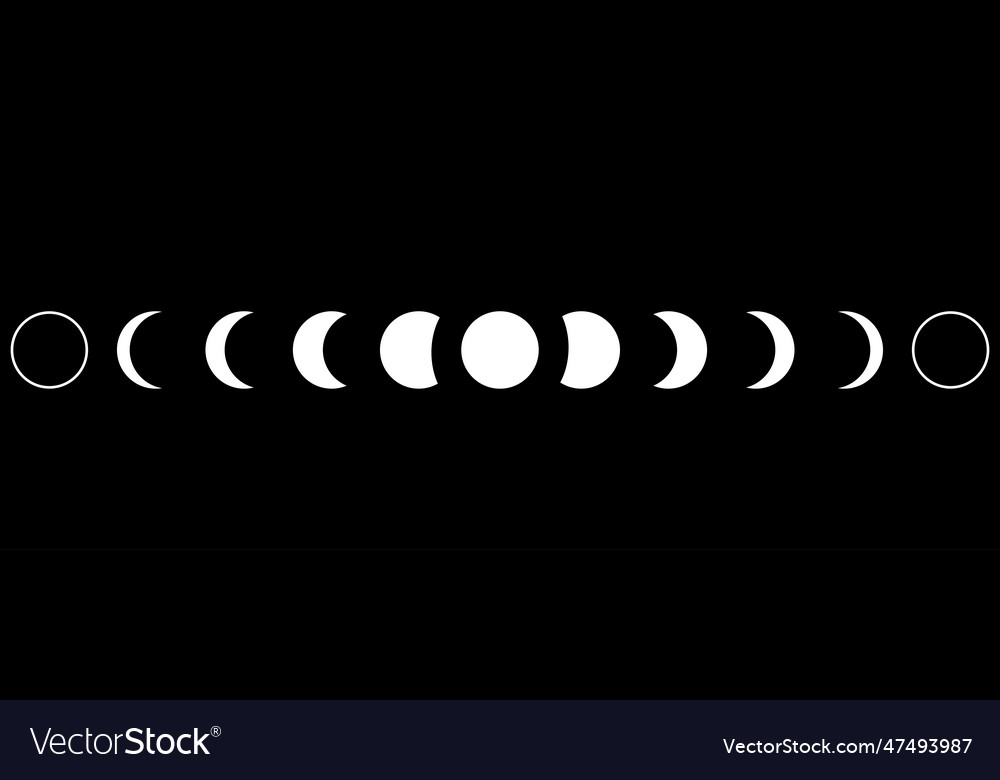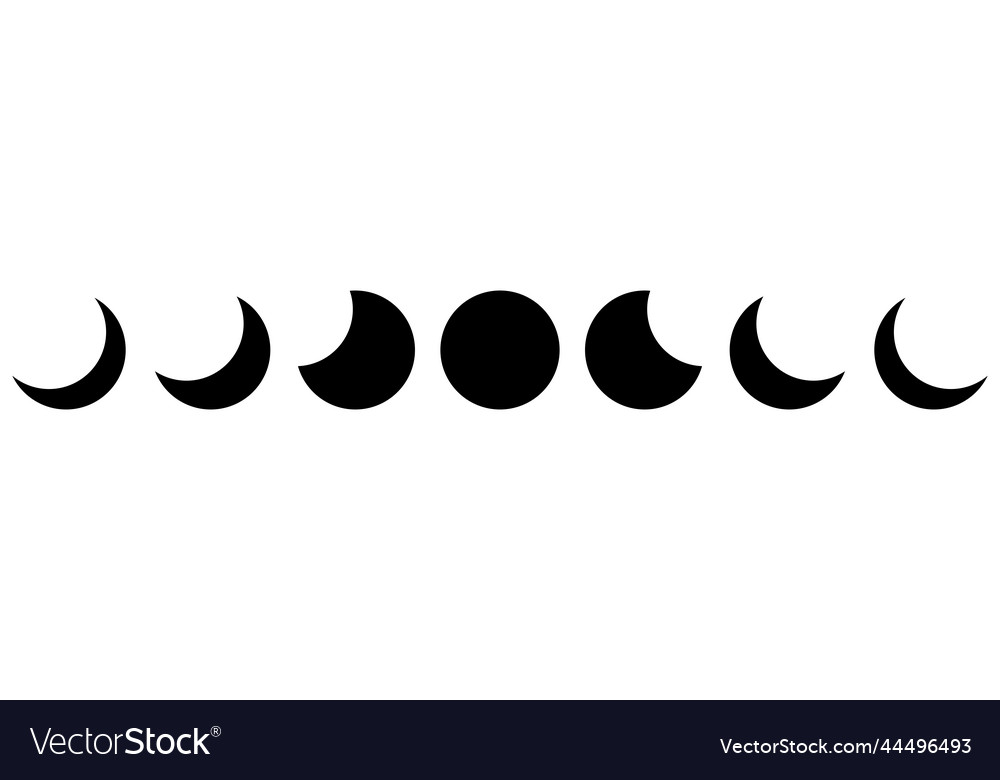Moon Phases Astronomy Icon Set On The White Vector Image

Moon Phases Astronomy Icon Set On The White Vector Image In geophysical terms, the moon is a planetary mass object or satellite planet. its mass is 1.2% that of the earth, and its diameter is 3,474 km (2,159 mi), roughly one quarter of earth's (about as wide as the contiguous united states). within the solar system, it is the largest and most massive satellite in relation to its parent planet. The moon makes earth more livable, sets the rhythm of ocean tides, and keeps a record of our solar system's history. explore nasa lunar science here.

Moon Phases Astronomy Icon Set Vector Stock Vector Royalty Free 796211884 Learn how earth's moon formed, how its orbit affects earth's tides, why solar and lunar eclipses happen and the history of lunar exploration. Nasa's interactive map for observing the moon each day of the year. what will you see? this shows the moon’s current phase in two ways: the percentage of the moon’s nearside that is illuminated by the sun, and how many days have passed since new moon. We describe how the moon looks with the eight moon phases, or shapes: if you have looked into the night sky, you may have noticed the moon appears to change shape each night. some nights, the moon might look like a narrow crescent. other nights, the moon might look like a bright circle. It orbits the earth at an average distance of approximately 240,000 miles (384,000 km). the moon completes an orbit of the earth every 27.3 days (approximately 655 hours). the moon also rotates on its axis. because of tidal forces, it completes one revolution every 655 hours.

Moon Phases Astronomy Icon Set Royalty Free Vector Image We describe how the moon looks with the eight moon phases, or shapes: if you have looked into the night sky, you may have noticed the moon appears to change shape each night. some nights, the moon might look like a narrow crescent. other nights, the moon might look like a bright circle. It orbits the earth at an average distance of approximately 240,000 miles (384,000 km). the moon completes an orbit of the earth every 27.3 days (approximately 655 hours). the moon also rotates on its axis. because of tidal forces, it completes one revolution every 655 hours. The brightest and largest object in our night sky, the moon makes earth a more livable planet by moderating our home planet's wobble on its axis, leading to a relatively stable climate. it also causes tides, creating a rhythm that has guided humans for thousands of years. How big is the moon? the moon is earth’s only permanent natural satellite, and it’s the fifth largest satellite in our solar system. the moon’s diameter is approximately 2,160 miles (3,475. Live science brings you the best moon facts and answers all of your lunar queries, from how did the moon form and whether the moon could ever be pushed from orbit to what is the "man in the. What is the moon made of, and how did it form? learn about the moon's violent origins, how its phases shaped the earliest calendars, and how humans first explored earth's only natural satellite.

Moon Phases Astronomy Icon Set Vector Illustration On The White The brightest and largest object in our night sky, the moon makes earth a more livable planet by moderating our home planet's wobble on its axis, leading to a relatively stable climate. it also causes tides, creating a rhythm that has guided humans for thousands of years. How big is the moon? the moon is earth’s only permanent natural satellite, and it’s the fifth largest satellite in our solar system. the moon’s diameter is approximately 2,160 miles (3,475. Live science brings you the best moon facts and answers all of your lunar queries, from how did the moon form and whether the moon could ever be pushed from orbit to what is the "man in the. What is the moon made of, and how did it form? learn about the moon's violent origins, how its phases shaped the earliest calendars, and how humans first explored earth's only natural satellite.

Moon Icon Set Phases Astronomy Icons Royalty Free Vector Live science brings you the best moon facts and answers all of your lunar queries, from how did the moon form and whether the moon could ever be pushed from orbit to what is the "man in the. What is the moon made of, and how did it form? learn about the moon's violent origins, how its phases shaped the earliest calendars, and how humans first explored earth's only natural satellite.
Comments are closed.